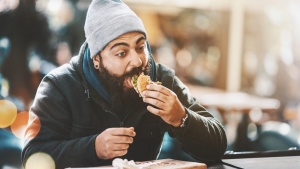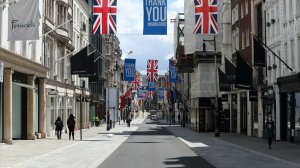
As the world waits for vaccines to work and restrictions to be dropped, food lovers are already making lists of where to travel next and what foods to try when they get there.
Despite the doom and gloom of the pandemic, we haven’t lost our passion for good food and drink. In fact, many of us finally had the time to cook at home, and talk with parents and grandparents to resurrect family recipes and learn old cooking methods. And because of the restrictions on movement, many of us have also rediscovered the joy of shopping in our own local neighborhoods – bakers, butchers, greengrocers, etc. In many ways, the pandemic opened our eyes to the food and beverage options in our own local areas.
Despite the negative effects of the pandemic, I’ve seen numerous positive benefits. Specifically, many local food and beverage retail stores and producers have done well financially during the pandemic, and even grown market share.
As for travellers, not everyone plays golf, visits museums or enjoys sightseeing, but everyone eats and drinks. The onus is on tourism offices to help visitors to discover their unique and memorable food and beverage products and experiences. What a shame when millions of tourists leave a sun-drenched beach area with memories of nothing more than fish and chips, hamburgers, pizzas, colas and imported beer – the same food and drink they can get at home.
Worse is that many of these prepared foods are made by foodservice factories – lower quality purchased wholesale and resold to tourists at a tidy profit. Those tourists will never be ambassadors for that destination, because they simply did not experience anything unique and memorable.
What if we could do better? What if destinations, governments and businesses worked together to celebrate local food and beverage producers, growers and makers?
Research done by the World Food Travel Association shows that food-loving visitors spend on average 25% of their travel budgets on food and drink. That percentage increases in more expensive destinations, as well as when food lovers spend on culinary souvenirs. We actively seek out local grocery or gourmet stores and think nothing of spending £200 on food and drink products on every trip to bring home with us.
That’s in addition to everything we already spend on restaurants, cafes, wineries, breweries, bars, food and beverage tours and other culinary experiences. That said, food lovers are explorers and prefer to do our culinary souvenir shopping among locals and avoid the overpriced duty-free stores. Yet it is not always easy for us to find the best places to buy our culinary souvenirs. To this end, certified local culinary tourist guides can really help.
Because many of us bring food and beverage products back as souvenirs, a few things happen when we share these food and beverage products with friends at home. First, the word-of-mouth engine starts. Friends and family sample our souvenirs, hear our endorsements and put themselves in our shoes.
They see our pictures and videos and imagine what it would be like to be there, sampling these food and drink items themselves. Invariably, someone asks “Where can I get this here?” If the product is not available in my area, then someone will have to make the trip to buy it in the same place where I bought it. That gets added to a wish list, which is what travelers are doing right now – adding to their lists.
Food and beverage brands can also encourage tourism. There is a very good reason why over a half million visitors each year (pre-pandemic) visit Epernay and Reims, France. It is because they know the Dom Perignon, Pommery and Taittinger cellar names.
The story is the same in Napa Valley, California, USA, which received four million visitors in 2019. People will travel to visit a famous brand like the Robert Mondavi Winery. Or consider the Ghirardelli chocolate factory in San Francisco.
If you are a food lover, no visit to the city would be complete without a trip to Ghirardelli. You can even smell the chocolate in the air as you approach the facility. Talk about touching all five human senses.
Specific food and beverage products can also encourage tourism. One example is Parmesano Reggiano in Italy, where visitors will go because they want to try “the real thing.” Great balsamic vinegar is available everywhere, but if you want “the real thing,” then one simply must visit Modena.
If you want some of the best black olives in the world, you’ll need to make a trip to Peru. There, the high acid content and terroir give the black olives an intensely rich flavor found nowhere else on Earth. Are you ready to travel yet?
Authentic experiences and genuine products can have another major impact on an area, namely increasing community pride. To be known as “the place” where visitors (and locals alike) can get “the real thing” is a badge of honor.
Sadly, many entrepreneurs still do not have access to one or more of those essential components. Better training and investment opportunities can help these entrepreneurs to survive and thrive as economies world-wide adjust to the new normal.
Erik Wolf is a strategist, speaker and founder of the World Food Travel Association.
Thanks for signing up to Minutehack alerts.
Brilliant editorials heading your way soon.
Okay, Thanks!

